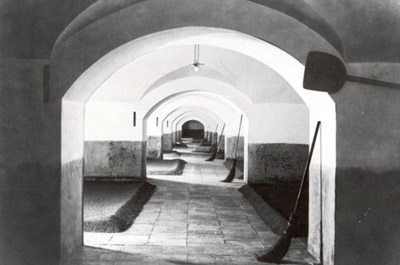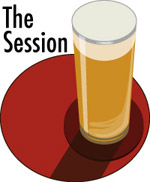 Hope you’re in a stout mood today, because you’re going to read a lot about them in various blogs in the first round of The Session. The theme today is “Not your father’s Irish stout.”
Hope you’re in a stout mood today, because you’re going to read a lot about them in various blogs in the first round of The Session. The theme today is “Not your father’s Irish stout.”
By Monday I will summarize posts on this topic from here and there and provide links.
As the instigator of this event I felt an obligation to make a good choice. I don’t mean the most spectacular stout I could find, but one that sets a tone for how I intend to approach this on a regular basis.
I thought first about a New Mexico beer, because I believe you should drink local and we have some excellent stouts in our state. But unless you come visit then you aren’t going to have much of a chance to find one of these. So I picked a beer from the region, from a brewery I know well, and one I’d certainly call “a good home”: Left Hand Milk Stout.
We (Daria and I) met Left Hand Brewing founders Eric Wallace and Dick Doore not long after they opened in 1994, introducing ourselves at the Great American Beer Festival because my aunt Gretchen lives in Longmont, where Left Hand brews. It took us three more years to get by the brewery, and it was the 50th for our daughter, Sierra. She was taken with the red-and-white Left Hand logo we brought home, and it’s likely one of the reasons she learned her left from her right early on.
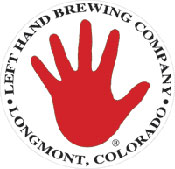 Although Left Hand distributes its beers in New Mexico, we often could find seasonals only in the Longmont area (this has changed, plus the Milk Stout is available year round and at a nearby grocery store). Left Hand produced just 20 barrels of Milk Stout the first year it was brewed and we missed it.
Although Left Hand distributes its beers in New Mexico, we often could find seasonals only in the Longmont area (this has changed, plus the Milk Stout is available year round and at a nearby grocery store). Left Hand produced just 20 barrels of Milk Stout the first year it was brewed and we missed it.
The second year our timing was better, so we were in Longmont about the time it was released. On the way to my aunt’s house we stopped at a liquor store. When I headed directly to the cooler and pulled out Milk Stout the man standing next to me – surely the one whose large motorcycle we had parked next to, given his leather garb and tattoos – nodded in approval.
“It’s smooth man,” he said.
It is, but like that biker not too smooth. The addition of milk sugar (lactose) provides a constant creamy sweetness that balances an abundance of aromas and flavors. Typical for Left Hand, the beer is made with five malts plus flaked oats and flaked barley. It proves a brewer can pack impressive depth and complexity in beer not much stronger than Budweiser (5.2% abv vs. 5%).
The nose is chocolate and burnt toast, with more rich chocolate and coffee flavors in the mouth. The finish is relatively dry, leaving a memory of coffee and sweet cream.
Michael Jackson writes extensively about milk stout in his Beer Companion. Its London inventors sought a patent in 1875, they deemed the deemed the invention of a milk beer so unique. Jackson reports that by 1936 Mackeson’s Milk Stout was available nationally and the style began to be included in the range of most breweries.
The Mackeson’s label included the rather bold claim: “Each pint contains the energizing carbohydrates of ten ounces of pure dairy milk.” That didn’t last long.
Jackson concludes his history lesson with this thought: “For those with a lifestyle sufficiently leisurely, or eclectic, to permit a mid-afternoon or early evening restorative, a glass of sweet stout and a piece of cake is an innocent pleasure.”
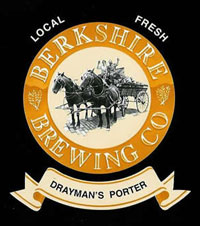 Here’s an example of what I mean by beer from a good home:
Here’s an example of what I mean by beer from a good home: 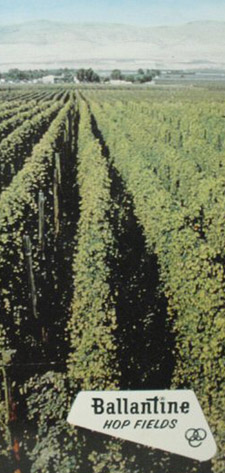 Enough about session beers, at least for the moment. Let’s get back to hops.
Enough about session beers, at least for the moment. Let’s get back to hops. But I will write that one thing I want it to mean is that context makes a difference. Before you fire off another what the heck question, look at the contest Alan McLeod has invented at
But I will write that one thing I want it to mean is that context makes a difference. Before you fire off another what the heck question, look at the contest Alan McLeod has invented at 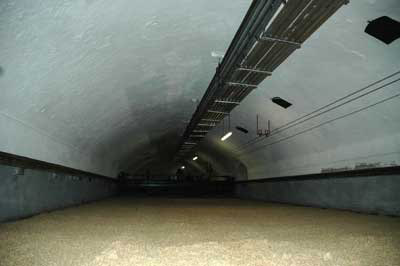
 (Given that eyes adjust better to dark conditions that my camera, the photos here don’t quite portray what I saw. The top one shows the hall, the one to the right the machine from a long ways away with the light “turned up,” the next a chalkboard that tracks the status of a batch of malt. The image at the bottom shows that Augustiner has left some tradition behind – picturing when malt was turned by hand.)
(Given that eyes adjust better to dark conditions that my camera, the photos here don’t quite portray what I saw. The top one shows the hall, the one to the right the machine from a long ways away with the light “turned up,” the next a chalkboard that tracks the status of a batch of malt. The image at the bottom shows that Augustiner has left some tradition behind – picturing when malt was turned by hand.)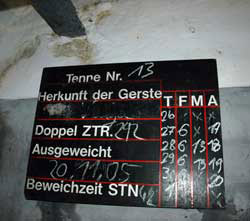 Augustiner is the last brewery in Germany with its own malting facility, and its floor-malting is one of only two left in the country. Augustiner bills itself as the “keeper of the tradition” but this is about more than tradition. Most agree that floor malting produces superior malt. By maintaining its own maltings Augustiner also has the option to pick from different barleys, sometimes using older varieties of that malt suppliers no longer offer.
Augustiner is the last brewery in Germany with its own malting facility, and its floor-malting is one of only two left in the country. Augustiner bills itself as the “keeper of the tradition” but this is about more than tradition. Most agree that floor malting produces superior malt. By maintaining its own maltings Augustiner also has the option to pick from different barleys, sometimes using older varieties of that malt suppliers no longer offer.